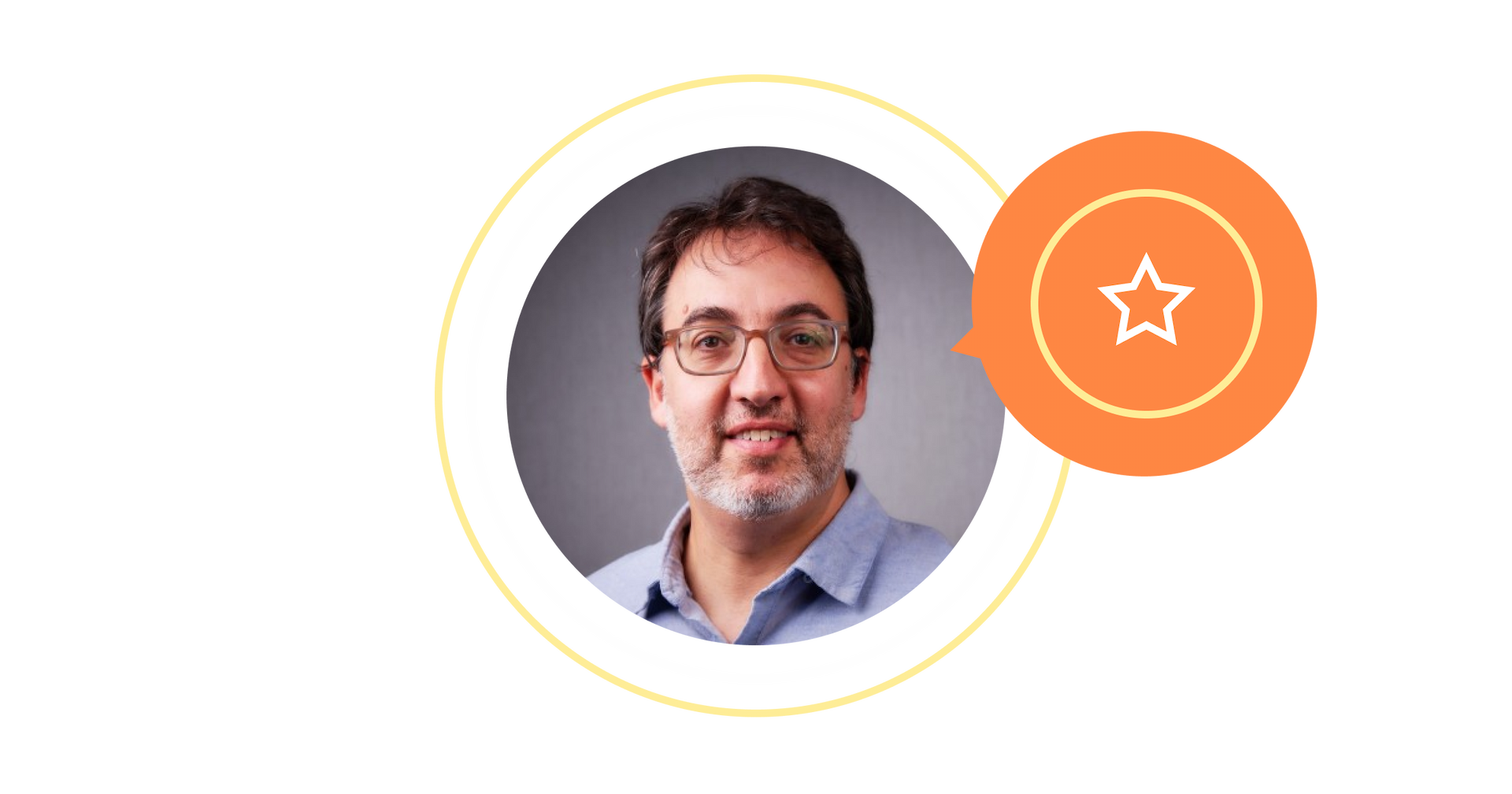Objectives and Key Results (OKR) is a well-known framework, but the act of setting the goalpost makes no guarantee of getting there. In the context of private equity, quick shifts and responsiveness to industry trends can help an organization stay the course toward its core objective. This is business agility — yet many portfolio companies aren’t leveraging its potential.
“We need some way to both align on what outcomes we want to create and what metrics we’ll use to know we’re [going] in the right direction,” says business consultant Yuval Yeret. “But also [we need to] keep it open to learning about what works.”
Yuval is a professional Scrum trainer and innovation expert, specializing in business management in product development and IT. He helps organizations think pragmatically about agile processes that assemble the right teams to solve the right problems.
His Boston-based company, Yeret Agility, has worked with clients ranging from fast-moving startups to globally recognized consumer brands. Yuval finds that the same basic agility principles apply to organizations of all sizes.
To explore the connection between business agility and reaching private equity OKRs, Yuval joined the Dreams with Deadlines podcast. Scrum or any agility framework needs more than a conceptual philosophy. Businesses can follow these best practices to see their OKRs to completion.
Testing the investment hypothesis
Private equity funds restructure companies to maximize or restore their profitability. Any investment is inherently risky and will come with some ups and downs — yet some firms fail to anticipate the inevitable course corrections.
“They call it an investment hypothesis because it is a hypothesis about how we might be able to create value,” says Yuval. In reality, there will be some realignment and adjusting of metrics as the company collects data on what works and what doesn’t.
Business agility is not about moving fast. It’s about being nimble and responsive to organizational changes. It can include speed as an objective — such as optimizing a production process to build more quickly — but most often, business agility involves strategic changes to the business model.
For example, if a software company transitions from selling on-premises licensing to cloud-based software as a service, successful implementation will require alignment across sales, marketing, accounting, development, and customer service teams. Maybe the new web app offers a better user experience, but the sales team finds the messaging doesn’t resonate with the existing customer base. There was a hypothesis that users wanted simpler software, but maybe the bigger concern is maintaining functionality. An agile business can quickly learn from that feedback and adjust the product offering without abandoning the big-picture goal.
The metric is not the goal
As a framework, Objectives and Key Results is applicable in every industry, but many organizations mistake the metrics for the end goal. In a data-driven world, it’s easy to let numbers tell the whole story — yet people often feel success more than they measure it.
This is where OKRs differ from key performance indicators (KPIs). OKRs define the company’s direction. KPIs are steps along the way, but they often lack context.
For example, a call center might have a KPI of an answer rate above 90% or a certain speed at which agents can move through calls. A company transformation, however, may not value speed as much as a positive reputation and delighted customers, a qualitative rather than quantitative outcome. If the object is to have an outstanding customer service experience, one indicator may be a high answer rate, but simply answering phones faster is not the primary goal.
“We want people to work in a direction toward the mission,” says Yuval, “...but it’s a mistake to tell them exactly what to do to achieve those goals.” When KPIs are the focus, leadership tends to micromanage. Stick to the script. Hit the quota.
OKRs give the freedom to innovate and experiment. The question becomes, “What can you do to make this customer’s day delightful?” and the possibilities become more creative and authentic.
Empowering starts with why
Business agility requires organizational alignment — not in the sense that the whole company needs to abide by some top-down work process, but rather each team unites around a shared goal.
“The point is to talk about outcomes rather than specify outputs,” reminds Yuval. Teams may have different methods or activities, but if they’re aligned with the overall goal and vision of the OKR, the exact approach can vary.
Yuval cautions that this doesn’t mean management has no purpose. It’s still helpful to plan and establish team structures. What changes, however, is that teams aren’t simply given a list of what to do; they’re empowered by understanding why they’re doing it.
Empowerment works on two principles. First, uncertain environments require experiments. When private equity investors try to transform a company, they need a wealth of knowledge across departments and disciplines, and they need key contributors to be unafraid of speaking up or taking a new approach.
Second, people feel more motivated when they have autonomy in the workplace. Excellence becomes the mission instead of some vague feeling of trying to please the boss.
“When we empower a group of people who together have the needed interdisciplinary expertise,” Yuval explains, “we get better solutions.” Business agility creates space for the cross-collaboration and risk-taking necessary to turn a struggling company on its head.
Scrum principles at work
This kind of empirical process — collaborative iterations of new experiments based on a shared goal — resembles Scrum. Yuval admits that the Scrum has its detractors, but he says most people dissatisfied with Scrum don’t understand its true essence.
When Scrum becomes yet another system about getting people to work faster and harder, it fails. Scrum sprints are not productivity exercises to create a higher output or rush to meet a deadline. True Scrum centers on experimentation — the idea that teams have to try something before they can know if it works or not.
Teams respond to changes quickly not to achieve an arbitrary output goal but rather to adjust as they learn which ideas are viable.
When company leaders use a team-centered agile framework but keep the focus on KPIs instead of a broader outcome, the result is what many software developers term zombie Scrum. It looks like Scrum, but it’s dead on the inside. Employees who do not feel genuinely empowered become more likely to slow down, “quiet quit,” and eventually become the dreaded workplace zombies.
Private equity best practices
Private equity will always focus on profitability. There’s no sense in investing without some emphasis on the returns. But with bumps in the road and some course corrections inevitable, agile frameworks allow for a wider view than just the P&L statement. Here are three guiding principles for an agile organization.
Shuffle dynamically
Create teams focused on specific results, and rearrange them as needed when the objective changes. For example, an early stage of a go-to-market strategy might need an analytics-focused team to conduct a feasibility study. As the plan progresses, people with different skill sets may be better suited to take point. Lean into the strengths of the people best suited for a particular job.
Use evidence-based management
Make decisions based on the data available, not just what’s worked best historically. “The key point in evidence-based management,” says Yuval, “is that we have evidence. We empirically look at where are we tracking, and we use that to improve on an ongoing basis.” Many business leaders use data primarily as a budgeting mechanism, but the main goal is to learn from what’s working best and adjust processes as needed.
Speak in outcomes
Set a qualitative objective with a quantitative key result. Yuval advises leaders to understand why they’re using OKRs. An OKR should not be just another project management tool to fill quarterly reports and push teams toward deadlines. If all it’s doing is prescribing certain business activities without establishing a unifying outcome for the organization, Yuval says it’s time to fix your OKRs. Agility is a framework, and it needs to apply at all levels of an organization for the mindset to take hold.
Dreams with Deadlines is the one and only strategy meets execution community. We’re a global network of ambitious leaders who are passionate about using OKRs and agile practices to achieve audacious goals and build a better future.
Whether you’re new to OKRs or a seasoned pro, the Dreams with Deadlines community is where you’ll find the knowledge, connections, and resources you need to achieve your goals with greater confidence, efficiency, and impact.
Join for free to get access to our private Slack forum, exclusive events, and curated networking opportunities to fuel your personal and professional growth.





